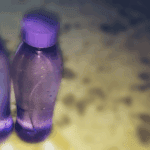Friendly Note: FreeJupiter.com shares general info for curious minds 🌟 Please fact-check all claims—and always check health matters with a professional 💙
We often hear about how quickly people make snap decisions about attraction. It’s commonly said that men can decide whether they’re attracted to someone in mere seconds—a quick scan, a mental “yes” or “no,” and they’re off, mentally planning a date or returning to their fantasy football lineup. But for women? The process is more nuanced, layered, and a little more mysterious.
In fact, a fascinating study published in the Journal of Experimental Social Psychology in 2009 revealed that women tend to focus on some very specific features when evaluating men’s faces for potential romantic interest: the lips, jawline, and cheekbones. And that’s just scratching the surface.
Beauty Isn’t Always Skin-Deep… But It Starts There
Researchers in the study set out to understand how women decide who they find attractive, and the results were surprisingly specific. Women tend to zone in on key facial markers—full lips, pronounced cheekbones, and a strong jawline. These aren’t just random features; evolution may have shaped this preference over generations.
Why these parts of the face? It ties into subtle biological signals.
- Full lips have been associated with youth and fertility.
- Sharp jawlines and high cheekbones may hint at higher testosterone levels, a trait often linked to health and genetic fitness.
It’s a quiet, unconscious scan—less like judging a cover, more like reading the introduction of a book. But even though women might notice these things first, that’s not the only layer to their decision-making.
Read more: The Ideal Age Difference for a Long-Lasting Relationship, According to Research
Not Just Pretty Faces: Attraction Is Multi-Dimensional
Unlike men—who, according to many studies, often make fast, visually based choices—women typically have a more layered response. The research highlights a two-level process: the physical and the psychological.
Yes, women notice facial features—but they also subconsciously ask deeper questions:
- Do I trust this face?
- Is he reliable or just charming?
- Would I want to work alongside him—or date him?
This brings us to the quirky setup of the original experiment.
The “Date or Lab Partner?” Test
To put female perception to the test, researchers gathered 50 heterosexual women and asked them to rate a series of photos. The catch? They had to decide whether the person in each image looked like someone they’d date—or someone they’d want as a lab partner. (Yes, really.)
Sounds random, but it was actually brilliant. It helped distinguish between who the women were physically attracted to and who they’d prefer in a practical setting—someone they’d trust, collaborate with, or consider reliable.
If someone looked like a great date but not a dependable science buddy, it told researchers something important: Attractiveness and trustworthiness aren’t always the same thing.
Twisting Faces—Literally—to Test the Theory
Now here’s where it gets even weirder. In a follow-up twist, the researchers took those same headshots and digitally sliced them in half—shifting the top and bottom halves so the faces were misaligned. Then, they asked a new group of women the same question: Date or lab partner?
And what did they find?
- When it came to choosing a date, the women’s preferences stayed almost exactly the same—even when the faces were visually distorted. Rugged stubble, square jaws, or a confident smirk still held their appeal.
- But when it came to lab partners, the misaligned faces made a difference. Women became less likely to trust or pick someone based on those off-kilter visuals.
This told researchers something huge: Women can separate physical attraction from emotional trust. They might still find someone good-looking—even with a face chopped and shuffled in Photoshop—but that doesn’t mean they’d hand them a beaker and call it teamwork.
Read more: If You Were Born On These Dates, You Manifest Without Trying
Real-World Echoes: What Dating Apps Tell Us
While the original study was conducted in a lab with carefully controlled photos and rating scales, the real world has its own version of this facial evaluation process—welcome to the wild, weird, and sometimes whimsical world of dating apps. From Tinder to Bumble to Hinge, modern romance has become a digital buffet of faces and bios. And what researchers discovered in a lab nearly two decades ago is still playing out—just with swiping fingers instead of clipboards.
Let’s unpack how these digital dating platforms mirror the psychology behind attraction and trust, especially from a woman’s perspective.
Swipe Culture: Fast Decisions, Slower Judgments
Yes, both men and women swipe based on first impressions, but how they do it differs.
Studies, including one by Pew Research in 2021, suggest that men tend to rely more heavily on physical appearance when making initial judgments. In contrast, women often pause, look deeper, and evaluate more than just the photo. A decent jawline might earn a swipe right—but only if the bio doesn’t scream “red flag.”
While men may swipe right more frequently and faster, women tend to swipe more selectively, applying both physical and emotional filters. This matches the two-level process from the lab study: a woman might find someone attractive but hold off until she’s sure he feels trustworthy, emotionally intelligent, or at least mildly interesting.
Profile Analysis: Beyond the Jawline
In real-world dating apps, women aren’t just analyzing cheekbones and smirks. They’re decoding:
- Grammar and tone: Is he funny or trying too hard? Is this guy yelling at me with all caps?
- Photos with pets or kids: Bonus points if he’s holding a puppy (though women are wary of “borrowed dog” syndrome).
- Job titles and hobbies: Passionate about rock climbing? Cool. Describes himself as an “alpha male”? Maybe not so much.
- Selfies vs. group shots: Can she even figure out which one he is?
These small details help women develop a fuller picture. Is this person just a pretty face, or could he potentially handle emotional conversations and Sunday brunch with her friends?
Cultural Reinforcement: Why We’re Trained to Notice These Things
TV shows, romantic comedies, and novels have all subtly trained us to associate certain facial traits with character types. A square jaw may signal a protector. Full lips can read as sensual. High cheekbones? Maybe mysterious or intense.
While this isn’t a rulebook for how attraction works, it explains why those specific traits stick in the subconscious. They’ve been culturally loaded with meaning.
And yet—there’s always more beneath the surface.
A Quirky Conclusion: Two Minds, One Face
The study ultimately proves something many people instinctively know but rarely say out loud: Attraction is complex, and women’s brains are particularly good at holding two seemingly opposite thoughts at the same time.
You can find someone attractive without trusting them.
You can feel a spark without wanting a long-term bond.
You can appreciate a chiseled face—and still not want to share a microscope with it.
This dual-process evaluation—balancing instinct and intention—is part of what makes female attraction so rich and hard to decode.
Read more: You’re a Different Person Than You Were 10 Minutes Ago, According To Science
Final Thought: The Face Is Just the Beginning
Next time someone assumes that women are overly picky or complicated when it comes to attraction, here’s a better way to put it: We’re just excellent observers. We notice things. We balance beauty with instinct. We use visual cues, but we don’t stop there.
Whether it’s for romance or research, women are asking the bigger question: Does this face match the kind of connection I’m really looking for?
And honestly? That’s pretty smart. Even if the jawline is perfect.










